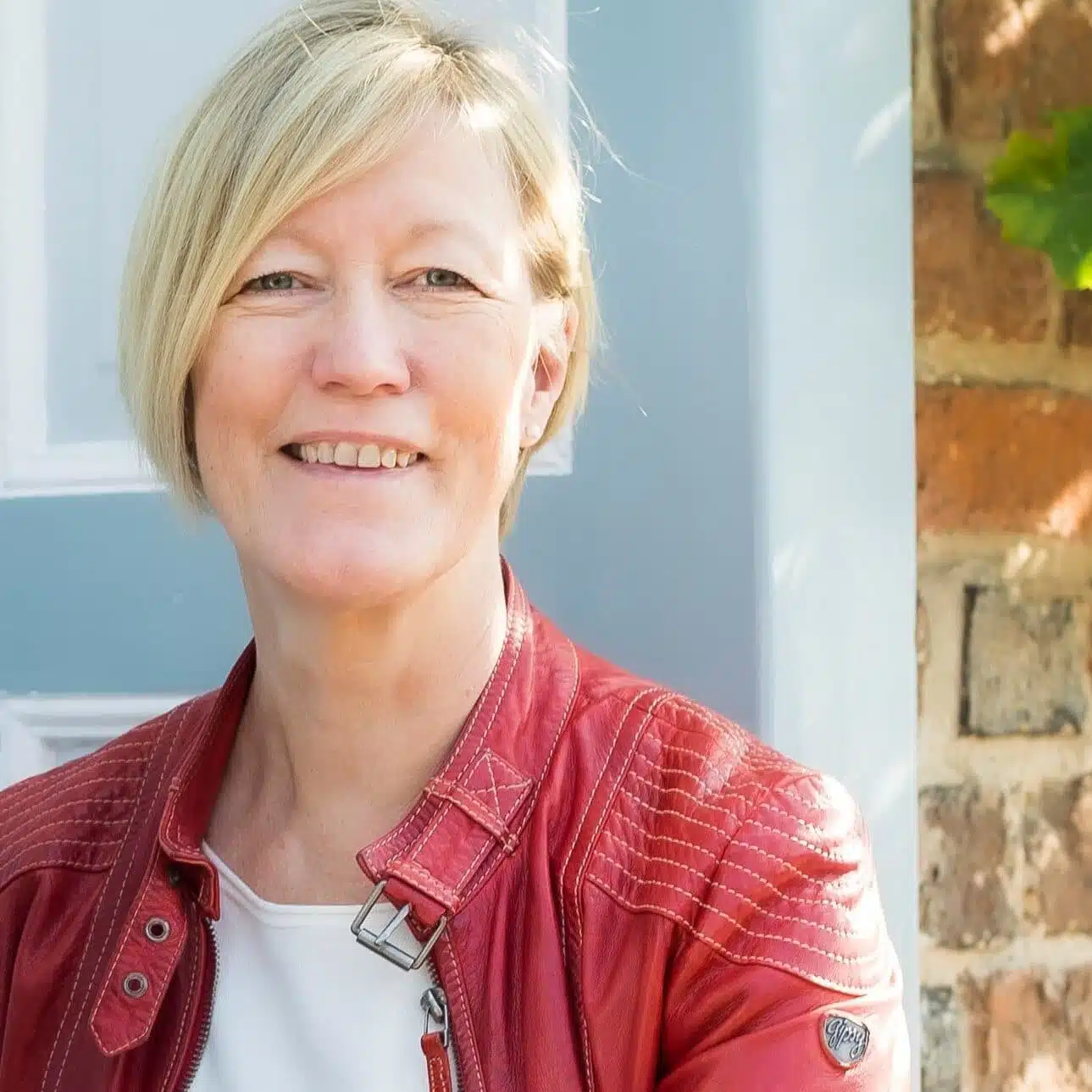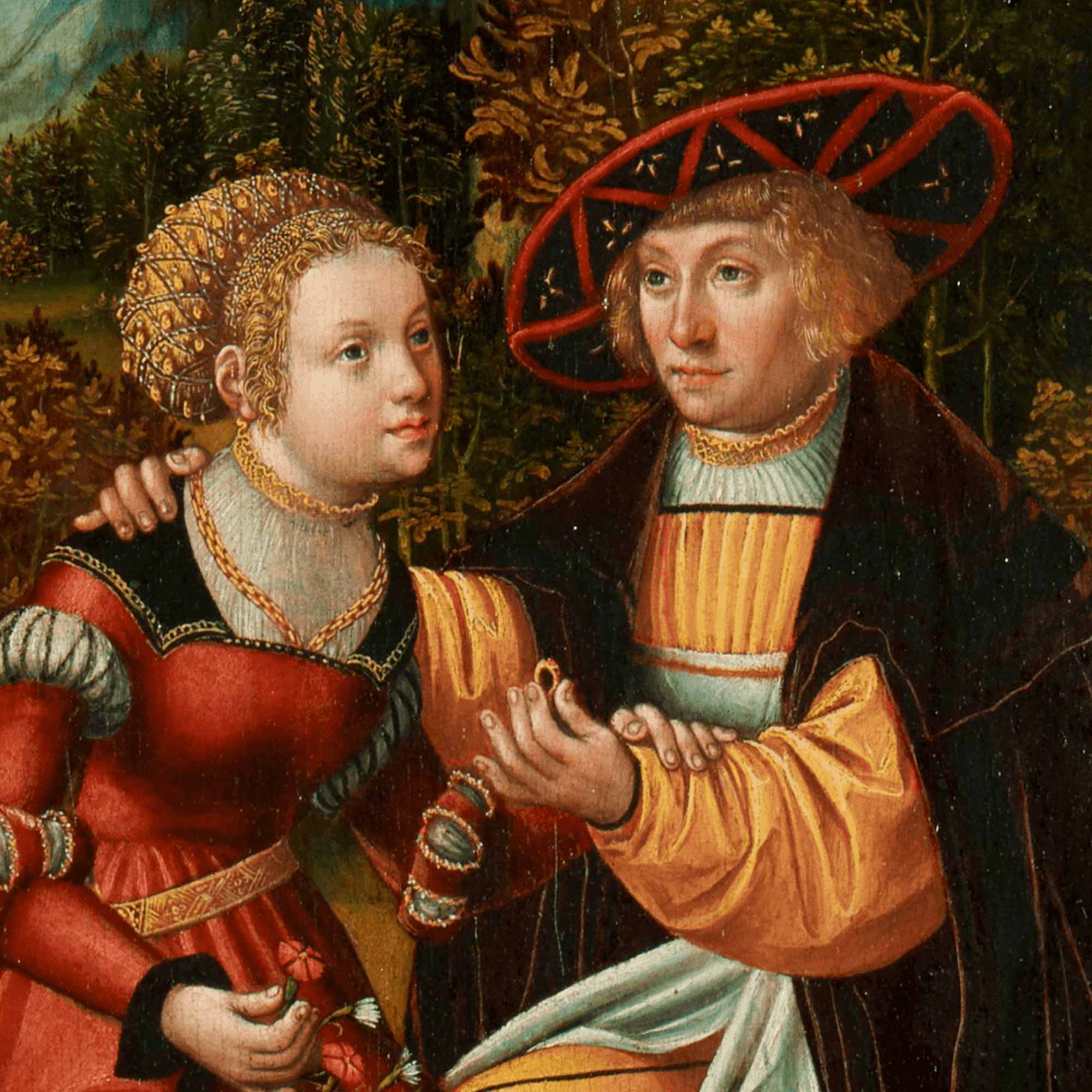Master painter at the St. Anne’s Museum
Today I enjoy a very special privilege: I going to take a look behind the scenes of the new exhibition “Cranach-Kemmer-Lübeck – Master Painters between Renaissance and Reformation” in Lübeck at the St. Anne’s Museum, which will open on 24.10. and be on display until 06.02.2022.
I am guided through the rooms by the museum director Ms. Dagmar Täube. They have been freshly prepared for the exhibits and equipped with new technology. Everybody involved is working highly concentrated in these days before the opening. Precious loans arrive every day. Some of the museum’s own works are already hanging in place. Dr. Täube gives me a glimpse into a world in which she as a specialist in the art of the Middle Ages and especially the 15. and 16th century moves around with great ease. With a beaming face she tells me about the great reformers and formative personalities of Lübeck who lived many hundreds of years ago, as if she had only recently chatted with them
Hidden champion – Hans Kemmer
Dr. Täube confesses to me that even she was not familiar with the name Kemmer just a few years ago. When she took over the management of the house 5 years ago, she discovered two somewhat unnoticed works by Kemmer in the permanent exhibition in the cloister, which were not in a good condition. Her curiosity was sparked. This was followed by research and exchange with colleagues all over the world about this painter from Lübeck, who had fallen into oblivion after his death. The complexity of the subject captivated her. So much so that after only 1.5 years of intensive preparation, the Lübeck exhibition will open its doors in a few days. Kemmer is a rediscovery and a gift to Lübeck
The exact date of birth of the Renaissance painter Kemmer is not known, but it is dated 1495-1500. It is believed that between 1515 and 1520 Kemmer continued his apprenticeship begun in Lübeck in the Wittenberg workshop of Lucas Cranach the Elder. The fact that Kemmer worked for Cranach and was one of his most important students can be determined from signatures that are made visible by means of infrared reflectography. The exhibition uses various examples to show how this special camera works. Kemmer’s style was concise and individual – like a handwriting. He sweepingly sketched outlines and details on the canvas. Works with just such signatures were also found in the Cranach workshop.
With the skills he had perfected in Wittenberg, but above all with fresh impressions from the centre of the emerging Reformation, Hans Kemmer returned to Lübeck in 1520. Here he married the painter’s widow Anneke Wickhorst in 1522 and took over the workshop of the previously deceased. It was a common practice at the time, that a craftsman’s widow married a journeyman after the death of her husband. It was a win-win situation, so to speak, as the widow was well provided for and a journeyman got a workshop of his own. Kemmer was quickly well connected in Lübeck, received commissions from wealthy Lübeck families and was able to purchase a house in an exclusive location at Königstraße 34 in 1528. Even after the Reformation, which arrived in Lübeck in 1531, his success continued. He adapted Cranach’s pictorial language to Lübeck conditions. He portrayed noble merchants and represented the painters and glaziers in the Lübeck Council as an Elderman. On August 2, 1561, Hans Kemmer died and was buried in St. Catherine’s Church. After that, his name fell into oblivion. 29 works painted by Kemmer are known today. 22 are being shown for the very first time 460 years after his death. Loans from private collections, from some neighbouring European countries, one also from the US.
Superstar Lucas Cranach the Elder
There have been and still are countless exhibitions and extensive research on Cranach, including the Cranach Digital Archive. A platform that also provides the interested public with access to the multi-talented Cranach: https://lucascranach.org/ More than 1,500 of Cranach’s paintings have been preserved. Cranach had a flourishing workshop in Wittenberg, and painted motifs in series. Or rather, he often had his journeymen paint. He was well known throughout Saxony, was elected mayor of Wittenberg nine times, owned a wine shop, a printing press, a pharmacy, numerous properties, and was closely associated with Martin Luther, Philipp Melanchthon, and Georg Spalatin. And it was precisely these formative contemporaries that Hans Kemmer also encountered in Cranach’s workshop.
The times they are a-changin
Cranach and Kemmer lived in exciting times. Well, when exactly was the history of mankind ever boring at all? At the end of the 15. and in the 16th century there were a lot of changes. With new scientific knowledge, the discovery of America, with the invention of printing and the translation of the Bible by Luther, society changed and more people could participate in social and political processes. A time of upheaval in the transition from the Middle Ages to modern times.
People’s lives were no longer determined by provisions for the afterlife. New themes and their treatment by contemporary artists became relevant. Whereas in the Renaissance mainly praying benefactors were portrayed, the focus was now on the human being as a self-reliant being.
Sneak preview
So what do the paintings by Kemmer and Cranach tell me? There is, for example, the portrait of the Bergen seafarer Hans Sonnenschein. He shows himself hatless with the fruit of life in his hand. The picture is heavily overpainted. In the original, which dates from about 1534, he was wearing a hat and holding a scroll. After his death, his widow probably had the picture reworked into an epitaph. The only way to remember a deceased person pictorially. Without such pictures, we would not know what famous Lübeck citizens looked like, what clothes they wore, what accessories they adorned themselves with.
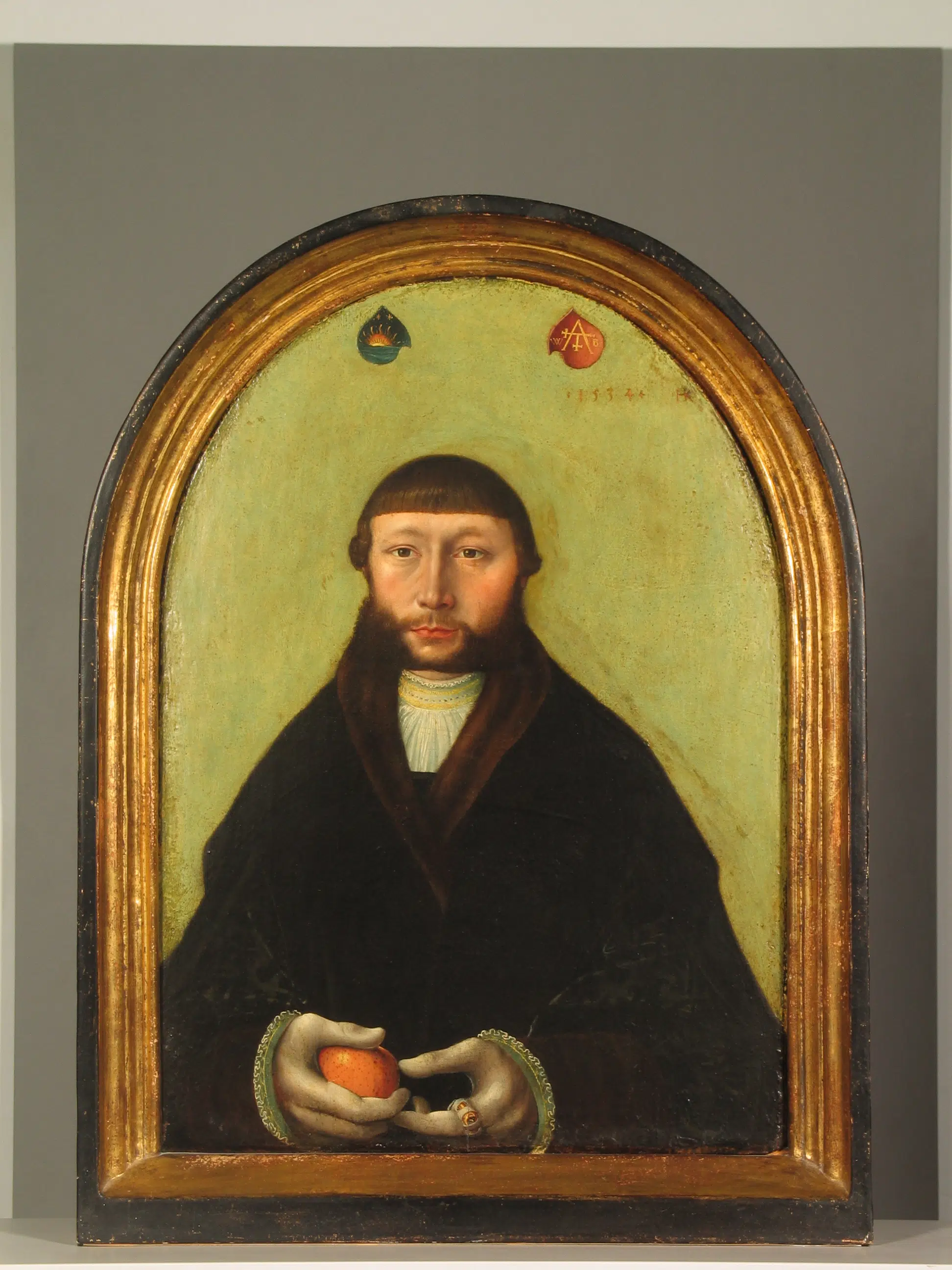
The wealthy donor couple Timmermann Kruselmann commissioned Hans Kemmer to make a wooden wedding bowl for their daughter, in which the bridal gifts of the guests were to be collected. The exhibit is on loan from Schwerin. The couple had their portrait painted by Kemmer in 1537, praying quite confidently in the centre of the painting with Jesus as Salvator Mundi hovering over them.
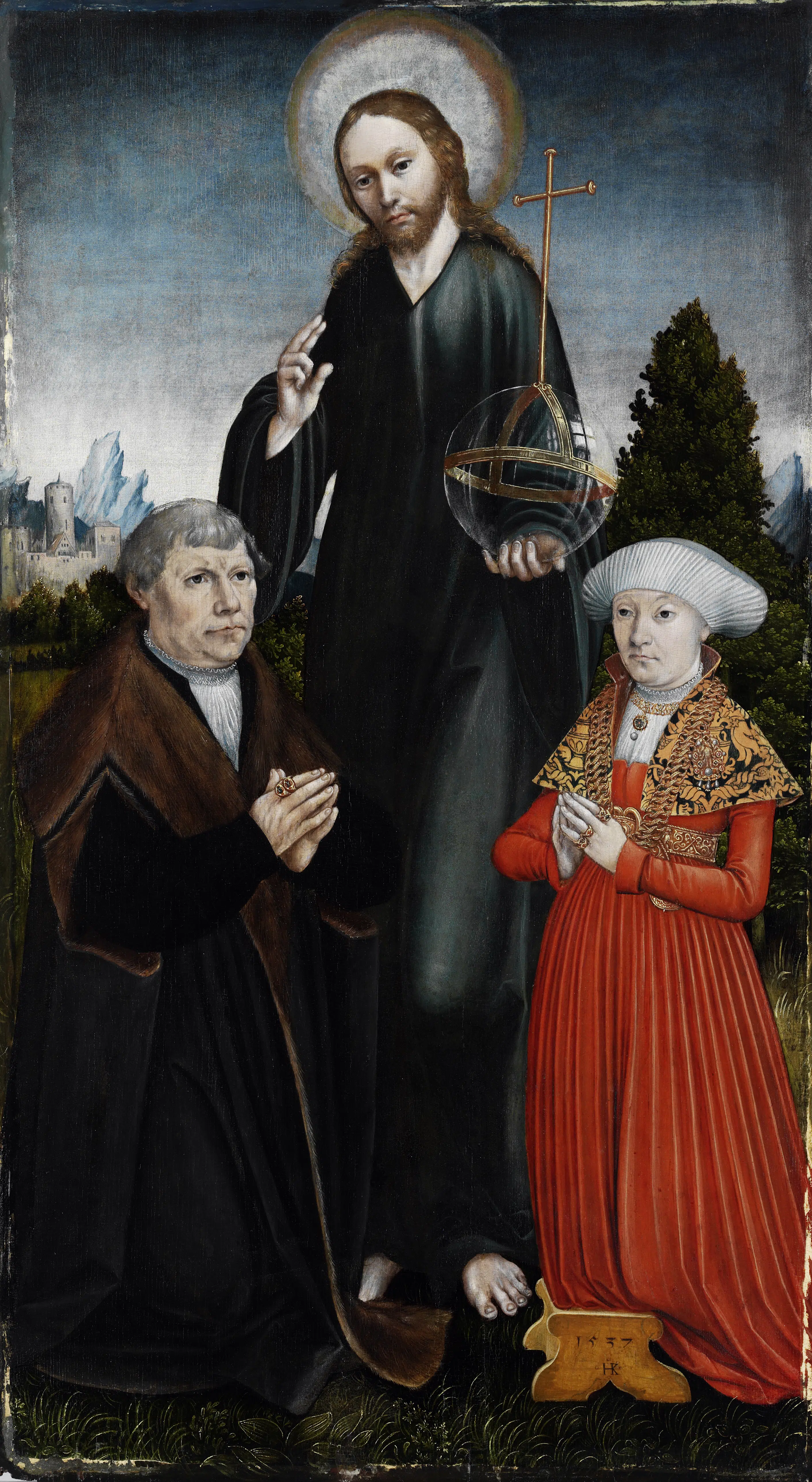
Hans Kemmer, Salvator Mundi, 1537, Lower Saxony State Museum Hanover, © Landesmuseum Hannover – ARTOTHEK 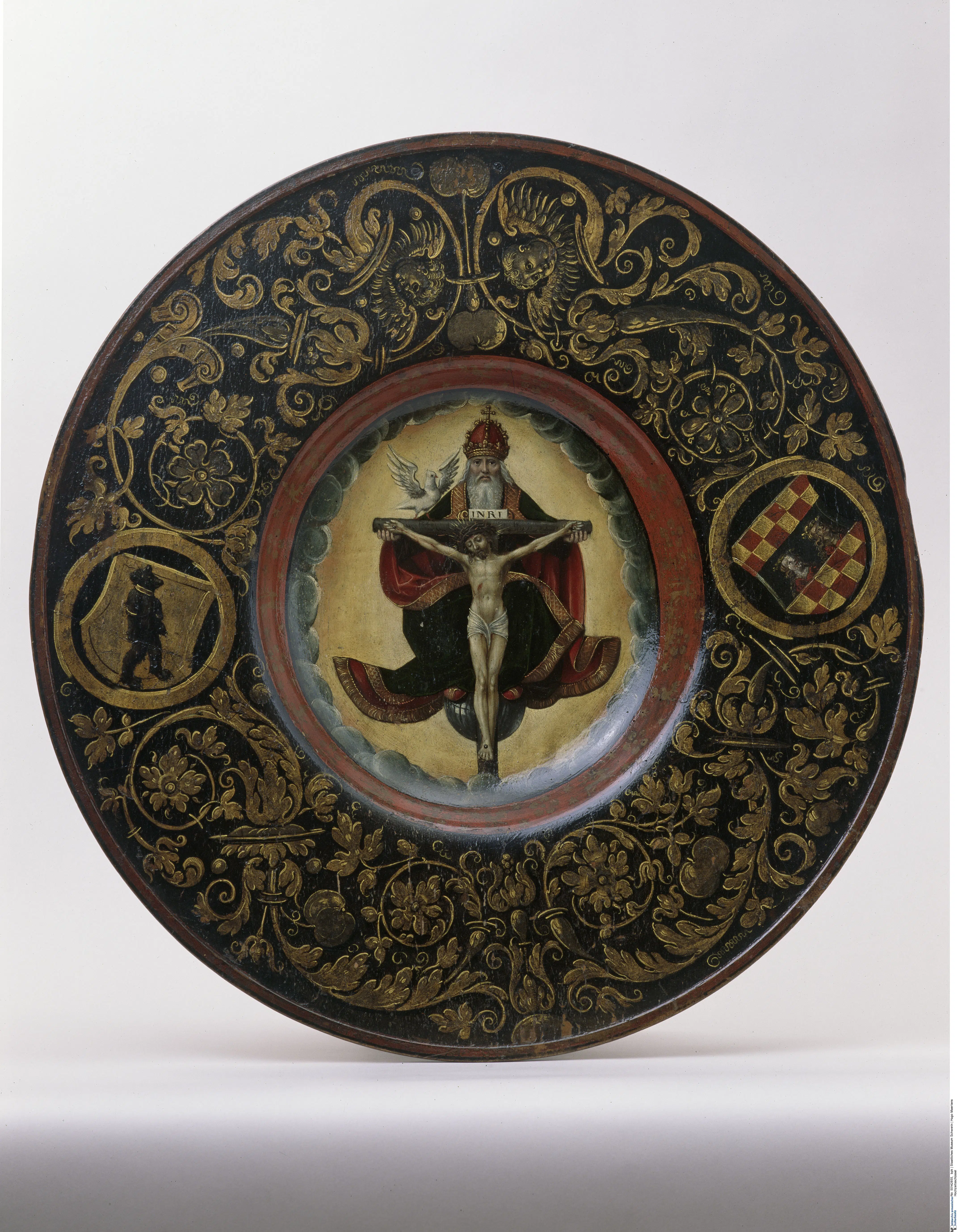
Hans Kemmer, Timmermann’s wedding bowl, 1540, Staatliches Museum Schwerin SSGK, © Staatliches Museum Schwerin SSGK, photo Gabriele Bröcker
The “Gift of love” is Kemmer’s only secular painting. The museum was only able to purchase it at auction from Sothebys in 2018 from a donation made in a will. It shows the merchant Johann Wigerinck and his bride Agneta Kerckring at the moment of the ring exchange. Kemmer took over the composition of the picture with the wide landscape, the bushes and the horse behind the tree from Cranach. Incidentally, the bride’s parents were well-known Lübeck residents and donors of the Kerckring winged altar, which can be seen on the first floor in the St. Anne’s Museum.

Hans Kemmer, Gift of Love, c. 1529 St. Annen Museum, Lübeck
The same Johann Wigerinck also commissioned Kemmer around 1529 with the painting “Christ and the Adulteress”in which he had himself depicted – namely as John the Evangelist, who stands directly behind Jesus and thus on the progressive side of those who do not want to stone the adulteress, but instead take the side of the sinner according to the motto “Let he who is without sin cast the first stone”.
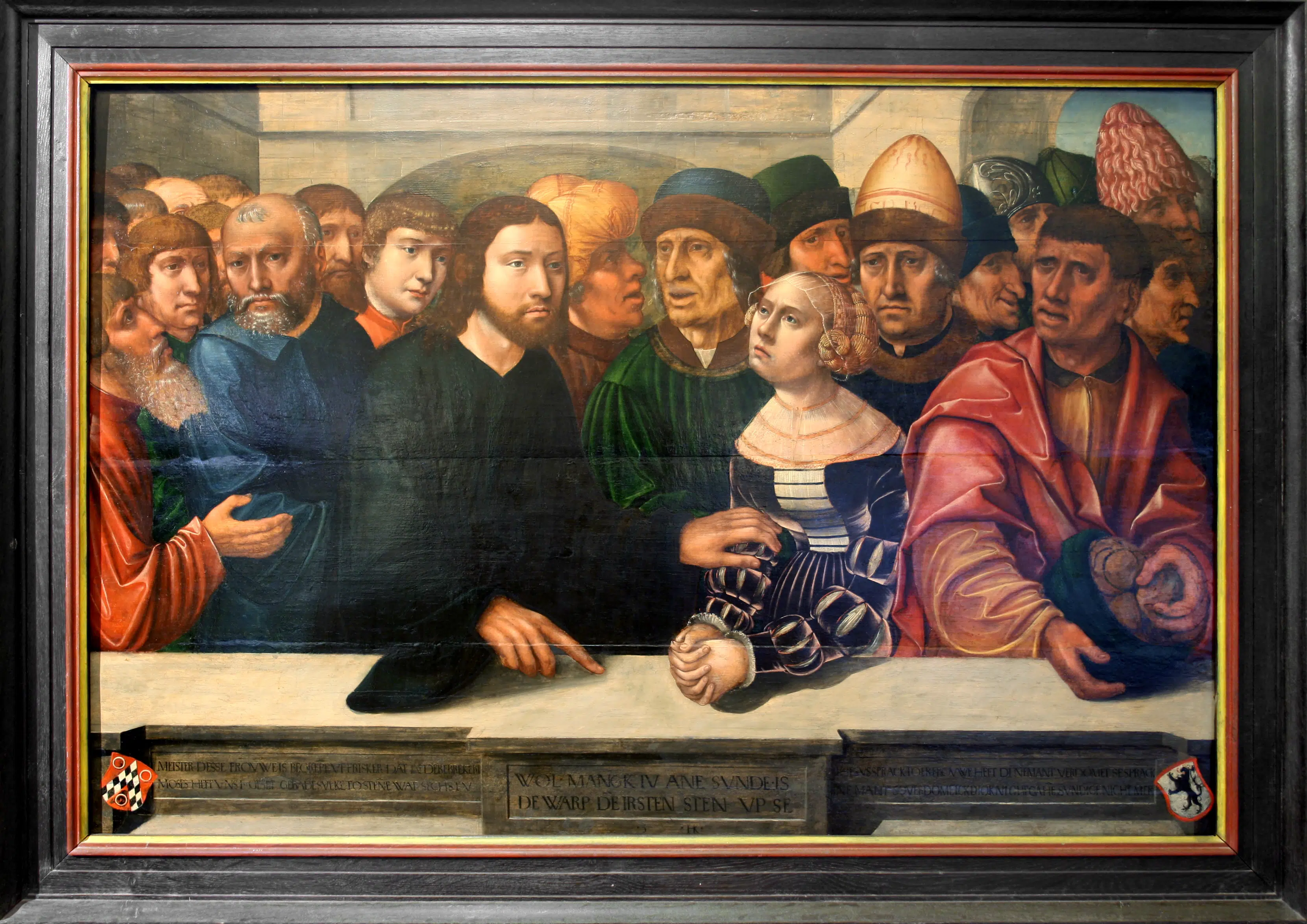
My favourite motif of the exhibition is by Cranach. It is calld “Christ and Mary” and when I visited the exhibition it was not even hanging. It is expected to arrive in Lübeck from Gotha shortly. But even the photo of the minimalist painting on parchment captures me instantly. This intense look of Jesus. Its closeness. The female figure is possibly Mary Magdalene. And the two look like a couple. Mary Magdalene with her head held at a slight angle. She looks confident. A revolutionary representation at that time.
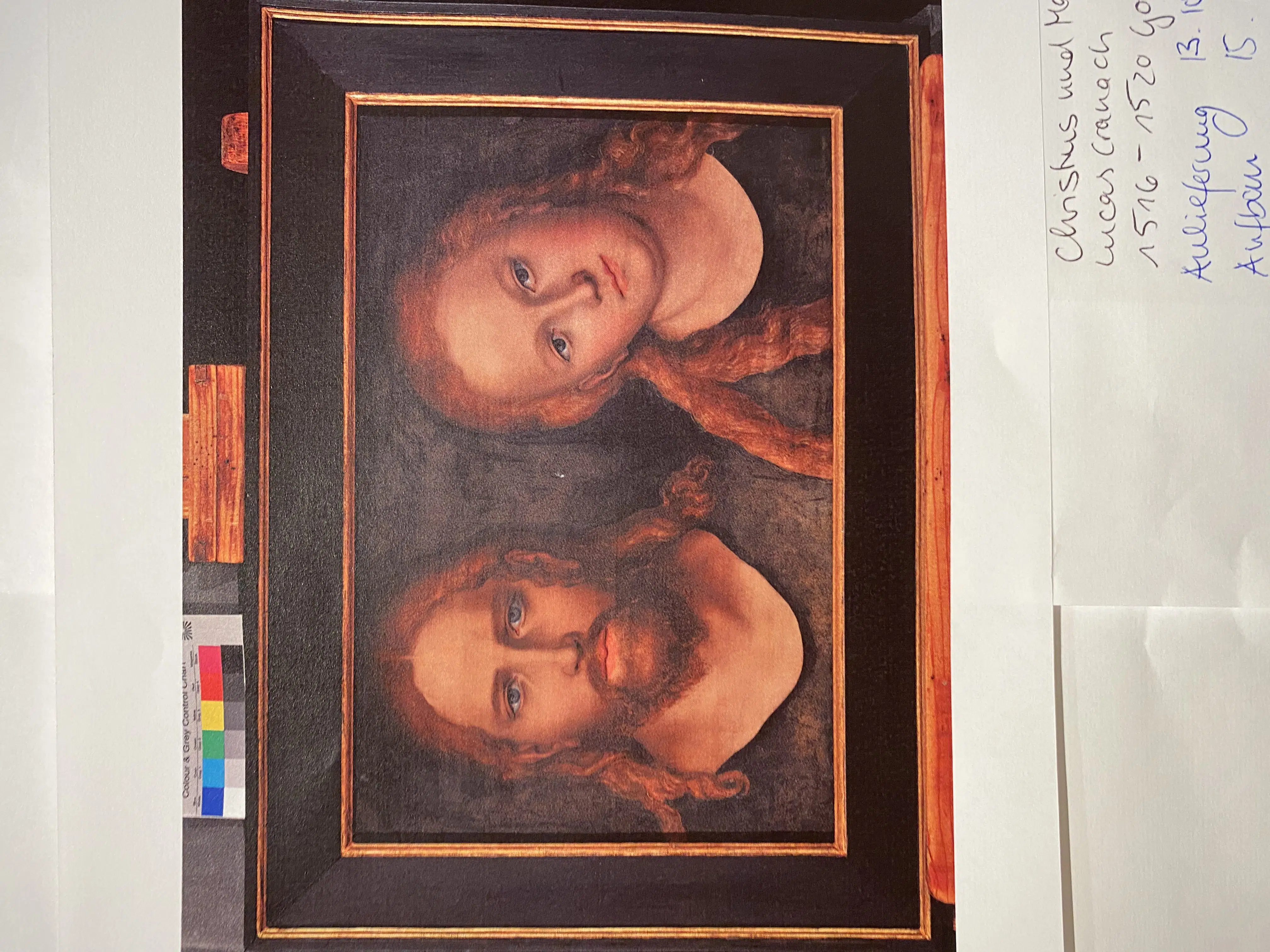
Christ and Mary, c. 1510, Friedenstein Castle Foundation
Discover Kemmer and Cranach interactively
An important goal of the exhibition organizers is to appeal to a wide range of visitors. In the entrance area, an entertaining animation will provide information about the painters, but also important social and political milestones of that time.
In addition, the exhibition will be accompanied by various activities for all age groups, such as a creative detective package for children, PC games for teenagers, and an interactive city walk through Lübeck to the places and sites that were relevant to some of the wealthy protagonists of the exhibition. In the cityscape, these locations are each identified by a red “K”. Using a QR code, insider knowledge can be queried on site: Who lived where 500 years ago? Who knew whom? Who had what profession and played which role in the city? Aren’t these the very questions that interest us humans to this day?
